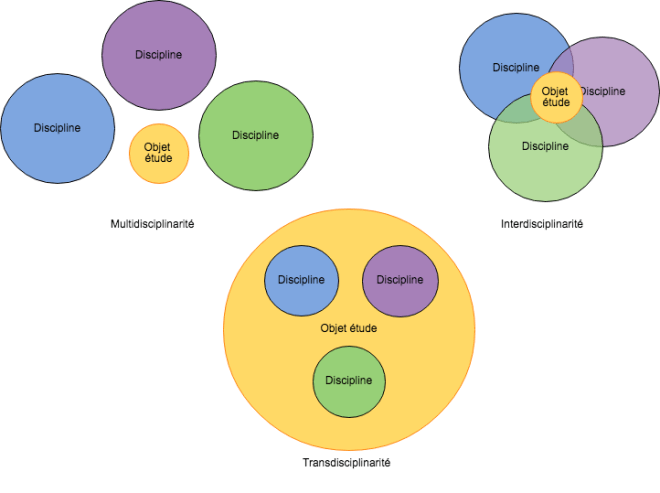About two years ago, on February 9, 2019, during the private audience that students and teachers had with him on the occasion of the 70th anniversary of the Alfonsian Academy, Pope Francis, in the light of Veritatis Gaudium,n. 4 [1] (VG), invited us to adopt and develop an interdisciplinary scientific approach in our ecclesiastical research in moral theology.[2] Therefore, we will highlight the importance of interdisciplinarity and transdisciplinarity, starting from VG,n. 4c. Then, we will define these concepts by comparing multi, inter and transdisciplinarity. Finally, we will highlight the three requirements necessary to favour transdisciplinarity in moral theology in the numbers 4a, b, d, of the VG.
- Interdisciplinarity and transdisciplinarity in theological research (VG, no. 4c)
With the VG, Francis wants to give a “new impetus to scientific research” in the Ecclesiastical[3] Universities and Faculties of the Church. According to the Pope, interdisciplinarity and transdisciplinarity allow theological research (and therefore moral theology), to open up to “a plurality of knowledge”, to better appreciate and understand the “multifaceted richness” of reality and the human[4] condition. However, the Pontiff insists that these approaches must be “exercised with wisdom and creativity in the light of Revelation”.[5]
Francis considers that “the rediscovery today of the principle of interdisciplinarity”is “positive and promising”. Especially “in its “strong” form of transdisciplinarity”, which implies a dynamic “fermentation” and flexible integration between all knowledge to give life to a new and creative understanding of an object of study, but always in the Light of Wisdom and Revelation of God.[6]
- Differenze fra multi / inter / trans – disciplinarity
To better understand the transdisciplinary method, it is useful to compare the methods: multidisciplinary and interdisciplinary.
In multidisciplinary, disciplines independently study the subject of research and present the results of their research. There is no dialogue between them. Multidisciplinarity is working with various disciplines. As shown in the following image, the circles are completely separate about the object of study. Multidisciplinarity is, therefore, a non-integrative approach of different disciplines in which each maintains its own method.[7]
In interdisciplinarity, there is a certain dialogue between disciplines favouring an overall understanding of the research object. This sharing can lead to a certain integration of theoretical concepts between the different sciences. However, each discipline remains in its frame of reference and method. Interdisciplinarity is a work between different disciplines. The circles of the image above are partially superimposed on the study object. Therefore, interdisciplinarity implies contact between disciplines: each helps to understand better the object of study with its own research concepts and methods.
Thanks to a fruitful dialogue, transdisciplinarity goes beyond the various disciplines, crosses them and incorporates them. Therefore, transdisciplinarity favours work through the disciplines (transversal) and beyond the disciplines (transcendental). Therefore, the transdisciplinary method allows developing an integration of disciplines that gives life to a creative and integral understanding of the study object. In transdisciplinarity, the circle of the study object (in yellow on the image above) totally incorporates the circles of the other disciplines. This represents the integration between the different disciplines concerning the subject of study. Transdisciplinarity is, therefore, a holistic, transversal, transcendental, integrative, collaborative and creative approach that includes all disciplines, to offer a new and more integral understanding of the object of study.
- Three requirements to open up to transdisciplinarity in moral theology
In sections 4a, 4b and 4d of the VG, Pope Francis presents three criteria that can be considered as three requirements for developing a transdisciplinary approach in moral theology.[8]
First, Francis points out that ecclesiastical studies, through the “contemplation of kerygma and the Gospel of Jesus”, allow us to live the “mystique of us” and “a universal fraternity” to “discover God in every human being”.[9]. Therefore, transdisciplinarity requires research into moral theology a look of faith to recognize God’s presence, even in a person who supports a different point of view.
The second essential criterion for developing a transdisciplinary approach is that of a comprehensive dialogue’. Through this expression, Francis invites moral theology “to foster dialogue with scholars of other disciplines, be they, believers or non-believers”.[10]
Finally, to experience transdisciplinarity, it is urgent to network with various academic institutions worldwide and with those with different cultural and religious traditions.[11] This criterion invites us to be open to cultural and religious diversity in theological-moral research.
- Conclusion
This impulse by Pope Francis towards a transdisciplinary approach in theological research is very promising and inspiring. In fact, it pushes us towards a transdisciplinary moral theology “on the way out” that, animated by a spirit of “universal fraternity”, can “dialogue” and “network” with the various sciences. Moreover, this transdisciplinary openness can foster a renewed, creative and integral understanding in the various sectors of theological-moral knowledge of today and tomorrow.
Fr. Mario Boies, C.Ss.R.
[1] Francesco, Veritatis Gaudium [= VG], Apostolic Constitution about ecclesiastical universities and faculties (08.12.2017), in AAS 110 (2018), 3-36.
[2] ID., “To plan courageous steps to better respond to the expectations of god’s people”, in Study Moralia 57/1 (2019) 14; cf. ID., Veritatis Gaudium4c.
[3] ID. Veritatis Gaudium, 5.
[4] Ibid.4c.
[5] Ibid.; ID., ‘Designing bold steps’, 14.
[6] ID., Veritatis Gaudium4c.
[7] A. Plastics, “Multidisciplinarity, Interdisciplinarity, Transdisciplinarity,” 2018, e4 https://perezartsplastiques.com/2018/03/05/pluridisciplinarite-interdisciplinarite-transdisciplinarite/, [Access: 19.10.19].
[8] Cf. Francesco, ‘Designing bold steps’, 14.
[9] ID., Veritatis Gaudium4a.
[10] Ibid.4b.
[11] Ibid.4d.







